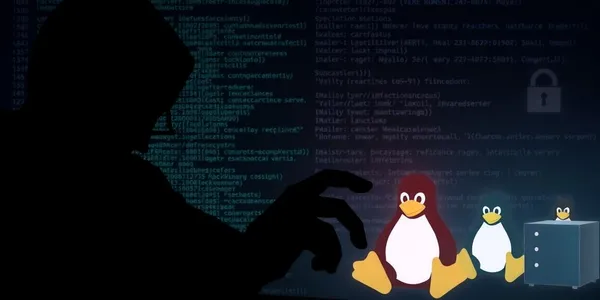A new and sophisticated malware known as Perfctl is wreaking havoc on Linux servers worldwide, exploiting vulnerabilities and misconfigurations to execute cryptomining and proxyjacking operations. This stealthy malware has been reported to target millions of servers, raising alarms among cybersecurity experts.
Key Takeaways
- Perfctl malware targets misconfigured Linux servers, exploiting over 20,000 vulnerabilities.
- It employs advanced evasion techniques, including rootkits and process masquerading.
- The malware can execute cryptomining operations and proxyjacking, significantly impacting server performance.
- Cybersecurity experts recommend immediate mitigation strategies to protect against this threat.
Overview of Perfctl Malware
Perfctl is a fileless malware that has been active for several years, targeting Linux servers globally. Researchers from Aqua Nautilus have identified its ability to exploit various misconfigurations, making it a significant threat to any internet-connected Linux server. The malware is particularly elusive, employing sophisticated techniques to evade detection and maintain control over infected systems.
Evasion Techniques
Perfctl utilizes several advanced methods to hide its presence:
- Binary Deletion: After execution, it deletes its binary and continues to run as a background service.
- Process Masquerading: It copies itself to various locations under names that resemble legitimate system processes, making detection difficult.
- Rootkits: The malware deploys user-level and kernel-level rootkits to maintain persistence and evade security measures.
Attack Vector
The attack chain typically begins with exploiting vulnerabilities in applications like Apache RocketMQ. Once access is gained, Perfctl can:
- Escalate Privileges: It exploits known vulnerabilities, such as CVE-2021-4043, to gain root access.
- Deploy Cryptomining Software: The primary goal is to run a Monero miner, consuming significant CPU resources.
- Execute Proxyjacking: In some cases, it can also deploy proxyjacking software, allowing attackers to monetize unused bandwidth.
Impact on Servers
The impact of Perfctl on infected servers can be severe:
- Resource Drain: The malware can exhaust CPU resources, leading to system slowdowns and performance issues.
- Data Theft: It may also facilitate the theft of sensitive data, as it can deploy additional tools to extract information from compromised systems.
Mitigation Strategies
To protect against Perfctl and similar threats, cybersecurity experts recommend the following measures:
- Patch Vulnerabilities: Regularly update all software and systems to close known security gaps.
- Restrict File Execution: Implement restrictions on writable directories to prevent unauthorized execution of binaries.
- Disable Unused Services: Turn off any services that are not necessary, particularly those exposed to the internet.
- Implement Role-Based Access Control (RBAC): Limit access to critical files and directories to reduce the risk of exploitation.
- Monitor for Anomalies: Keep an eye out for unusual CPU usage or network traffic patterns that may indicate cryptomining or proxyjacking activities.
Conclusion
The emergence of Perfctl malware highlights the ongoing threat to Linux servers, particularly those that are misconfigured or outdated. Organizations must take proactive steps to secure their systems against this sophisticated malware to prevent potential exploitation and data loss. By understanding the tactics employed by Perfctl, system administrators can better defend their networks against this and similar threats.
Sources
- New Perfctl Malware Targets Linux Servers for Cryptocurrency Mining and Proxyjacking, The Hacker News.
- Near-'perfctl' Fileless Malware Targets Millions of Linux Servers, Dark Reading.
- New BPFDoor Controller Enables Stealthy Lateral Movement in Linux Server Attacks, The Hacker News.
- New Perfctl Malware Attacking Millions of Linux Servers, CybersecurityNews.
- Outlaw Group Uses SSH Brute-Force to Deploy Cryptojacking Malware on Linux Servers, The Hacker News.







